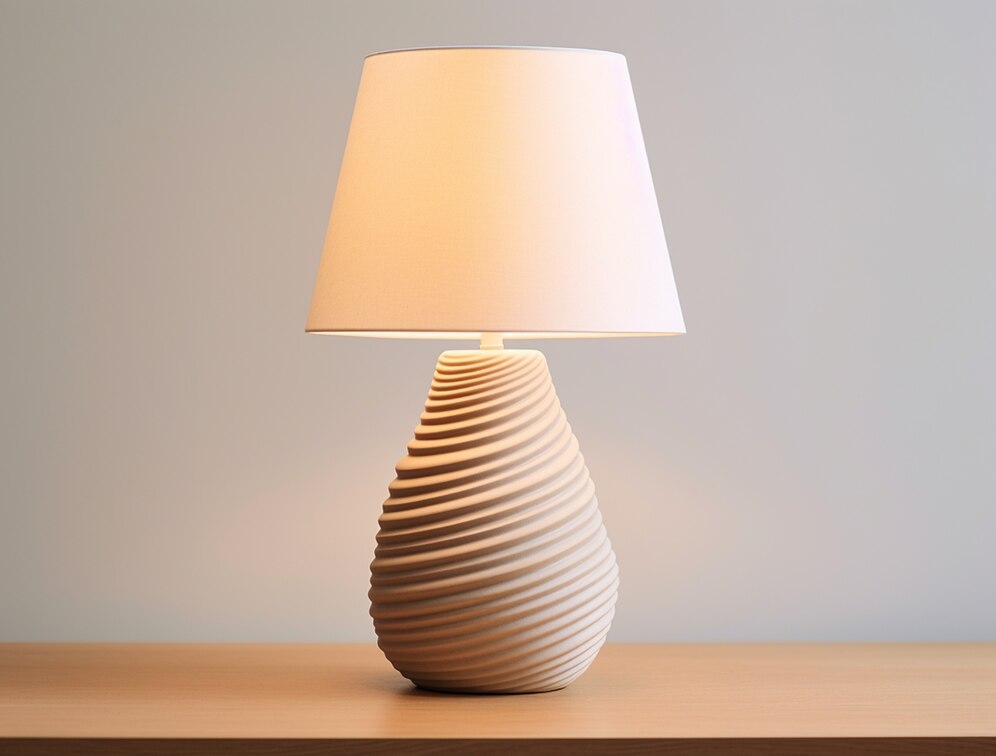Lamps are more than mere sources of light; they are essential elements of interior design that can transform the ambiance and aesthetic of any room. Whether you’re looking to create a cozy reading nook, add a touch of elegance to your living room, or enhance your bedroom’s calming atmosphere, styling a lamp involves thoughtful consideration of both functionality and decor. In this guide, we will explore the art of styling lamps in your home, covering everything from selecting the right lamp to integrating it seamlessly into your existing decor.
Understanding the Importance of Lamps in Home Decor
Lamps serve several crucial roles in interior design, making them indispensable components of any well-designed space:
- Functional Lighting: Lamps provide task lighting for activities such as reading, working, or crafting. They also contribute to ambient lighting, creating a warm and inviting atmosphere.
- Decorative Accent: Lamps come in various styles, shapes, and materials, allowing them to serve as decorative accents that complement your overall decor theme.
- Focal Point: A well-chosen lamp can act as a focal point in a room, drawing attention and adding visual interest.
Choosing the Right Lamp for Your Space
Selecting the perfect lamp involves considering several factors, including the room’s size, function, and existing decor style:
1. Determine the Purpose
Before choosing a lamp, identify its primary function in the room. Are you looking for task lighting for a desk or bedside table? Or do you need ambient lighting to enhance the overall mood of the space?
- Task Lighting: Opt for lamps with adjustable arms or directional heads that provide focused illumination for specific activities.
- Ambient Lighting: Choose lamps that emit soft, diffused light to create a cozy and inviting atmosphere.
2. Match the Decor Style
Consider your room’s decor style when selecting a lamp to ensure it harmonizes with its surroundings:
- Modern: Sleek, minimalist lamps with clean lines and metallic finishes complement modern decor.
- Traditional: Ornate lamps with classic designs, such as ceramic bases or fabric shades, enhance traditional interiors.
- Eclectic: Mix and match different styles and materials to create an eclectic look that reflects your personal taste.
3. Size and Proportion
Ensure the lamp’s size is proportionate to the surface it sits on and the surrounding furniture:
- Table Lamps: The lamp’s height should be balanced with the table or surface it rests on. The bottom of the lampshade should ideally be at eye level when seated nearby.
- Floor Lamps: Consider the lamp’s height relative to nearby furniture and ceilings. Tall floor lamps can draw attention to high ceilings, while shorter lamps work well in cozy corners.
Styling Different Types of Lamps
1. Table Lamps
Table lamps are versatile and can be used in various rooms, including bedrooms, living rooms, and home offices:
- Bedside Tables: Place matching lamps on either side of the bed for symmetry and balance. Choose lamps that complement your bedding and add decorative items like books or plants to complete the look.
- Living Room Side Tables: Opt for lamps that coordinate with your sofa or accent chairs. Consider mixing materials such as metal bases with fabric shades for added texture and interest.
- Home Office Desks: Select task-oriented lamps with adjustable features to provide optimal lighting for work tasks. Ensure the lamp’s design complements your desk style and doesn’t obstruct workspace.
2. Floor Lamps
Floor lamps are ideal for providing ambient or accent lighting in larger spaces:
- Living Rooms: Use floor lamps to illuminate dark corners or create cozy reading nooks. Consider arc lamps for overhead lighting or tripod lamps for a modern, sculptural effect.
- Bedrooms: Place floor lamps near dressing areas or seating areas to provide soft, ambient lighting. Choose lamps with dimmable features to adjust the light intensity based on your needs.
- Home Offices: Position floor lamps near workstations to supplement overhead lighting and reduce eye strain. Opt for lamps with adjustable heads or arms for versatility.
3. Wall Lamps and Sconces
Wall lamps and sconces are space-saving alternatives that provide focused or ambient lighting:
- Living Rooms: Install wall sconces on either side of a fireplace or artwork to create a balanced, symmetrical look. Choose adjustable sconces to direct light where needed.
- Bedrooms: Use wall lamps as bedside lighting to free up space on bedside tables. Consider swing-arm lamps for flexibility and ease of use while reading or relaxing.
Tips for Styling Lamps Effectively
1. Layer Lighting
Create a layered lighting scheme by combining different types of lamps (table, floor, and wall) to achieve optimal illumination and ambiance:
- Task Lighting: Position task lamps near work areas or reading nooks to provide focused light.
- Ambient Lighting: Use ambient lamps to fill in shadows and create a warm, inviting atmosphere.
- Accent Lighting: Highlight architectural features or artwork with accent lamps to add depth and visual interest.
2. Coordinate Colors and Materials
Ensure your lamps complement the room’s color palette and materials for a cohesive look:
- Color Coordination: Choose lamp bases or shades that echo existing colors in your decor, such as furniture upholstery or wall art.
- Material Harmony: Mix and match materials, such as metal, glass, ceramic, or wood, to add texture and contrast to your space.
3. Create Visual Balance
Arrange lamps in strategic locations to create visual balance and harmony within the room:
- Symmetry: Place matching lamps on either side of a focal point, such as a sofa or bed, to create symmetry and a sense of cohesion.
- Asymmetry: Experiment with different lamp heights and styles to create an eclectic, visually dynamic arrangement.
4. Use Lamps as Decorative Accents
Highlight lamps as decorative elements that enhance your room’s style and personality:
- Statement Pieces: Choose lamps with unique shapes, patterns, or textures to make a bold statement in your decor.
- Seasonal Updates: Swap out lampshades or bases seasonally to refresh your decor and reflect changing trends or seasons.
Practical Considerations for Lamp Styling
1. Ensure Safety
- Electrical Safety: Use lamps with UL-certified components and avoid overloading electrical outlets. Regularly inspect cords and plugs for wear or damage.
2. Maintenance
- Cleaning: Dust lampshades, bases, and bulbs regularly to maintain their appearance and efficiency.
- Bulb Replacement: Replace bulbs promptly to ensure optimal lighting quality and energy efficiency.
Conclusion
Styling a lamp in your home goes beyond functionality; it’s about enhancing your space with illuminating elegance and personal style. By carefully selecting lamps that complement your decor, considering their placement and functionality, and incorporating them into a layered lighting scheme, you can create a warm, inviting atmosphere that reflects your unique taste and enhances your everyday living experience.
Whether you prefer the timeless elegance of a traditional table lamp, the modern sophistication of a sleek floor lamp, or the space-saving versatility of wall sconces, the right lamp can truly illuminate your home and elevate its overall aesthetic. Embrace the art of lamp styling, and discover how these essential lighting fixtures can transform your living spaces into beautifully illuminated sanctuaries of comfort and style.

